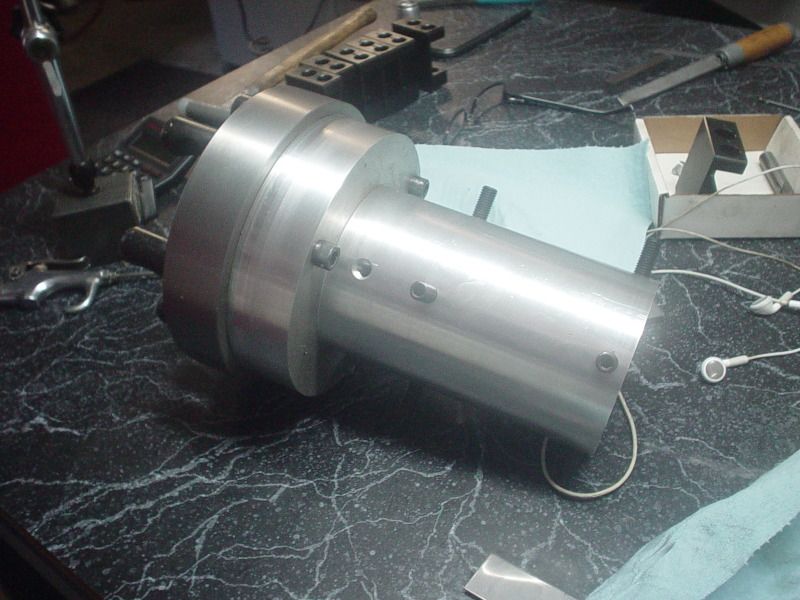Re: Nice lathe fixture but ran into problem
Setup your threading tool as you normally would.
Write your G92 cycle as you normally would.
Set your X offset so that it won't contact the part. (just bang it out .05" or as far as your wear offset will let you in your control)
Set your RPM to where you can watch the tool to see if it aligns with the root of the receiver thread.
Everything depends on how your encoder picks up the start position. Sometimes you get lucky and it's jonny on the spot. Most times it isn't. When this happens all you have to do is adjust your Z wear offset value. It doesn't affect the clock position in spindle rotation, but it will alter the actual point where the tool begins to engage the thread.
An example:
Using a R/H threading tool (meaning the insert cuts on the +X side)
%
O0001(Rem 700 receiver cleanup threading cycle)
G80
T0303(ID THREADER)
M03S750
G0X.9Z.1
G0x.9Z-.75M08
G92X1.0Z.1F.0625
X1.01
X1.02
X1.03
X1.04
X1.05
X1.06
X1.07
X1.0725
G0X.9Z.1
G0X9.0G80(<span style="font-style: italic">Rapid move and canned cycle cancel</span>)
M00(CHECK THREAD FIT AND ADJUST X/Z OFFSET IF REQUIRED AND RESTART)
M30
%
NOTE: If you were to use this actual program you'd want to run it out in space first. On FANUC controls you can go right to a rapid after running a canned turning/threading cycle because each pass concludes with the line of code written above the G92 (the rapid to start position). In this case that'd be catastrophic as the tool starts the thread down inside the bore and cuts out. This is with most slant bed CNC's using the tool insert inverted. (helps manage chips better as it throws them down into the chip bed more efficiently)
This is why you see the G0 move to z.1 at the conclusion of the threading cycle. The tool will be out in space at the end of the threading cycle. It will then rapid back to the start position. The G0 Z.1 move rapids it back to in front of the part so there's no collision.
If your tool starts in front of the part and cuts in a -Z direction then your just going to want to be sure that it will retract to the rapid/start position at the conclusion of the threading cycle. I personally always make it a point to enter it anyway. If the machine ever goofed and tried to rapid move in X with the tool down inside the part it'd be a disaster.
As for timing the thread: +Z "retards" the start point of the thread. -z "advances it". It's backwards if your starting down inside the hole though.
+X (if using a R/H tool) moves into the part, -X moves away.
Hope this helps and wasn't too confusing.
Good luck
C.
PS: Here's a hint. It IS possible to string a series of threading cycles together. Doing so opens the door to big things. . .
PSS, here's a better hint. DITCH the lathe and set it up in the VMC. Doors will open, the heavens will fill your ears with angels singing, and you'll be able to do some REALLY cool chit that just aren't possible in a lathe.
Thread milling ROCKS!





